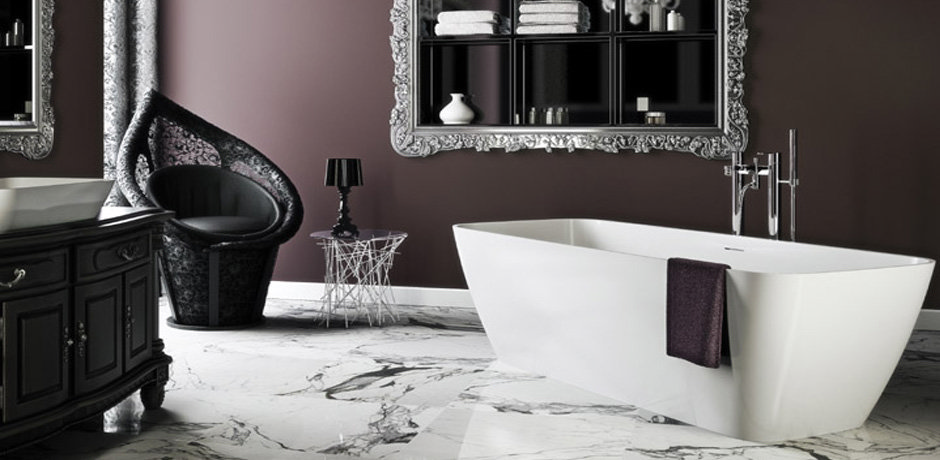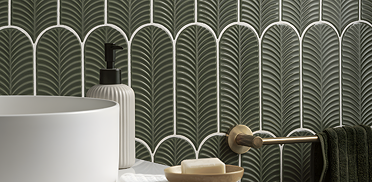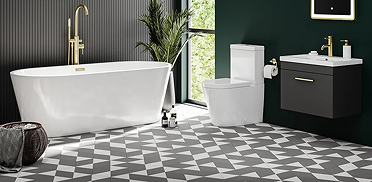OUR WINTER SALE ENDS SOON!
*Boxing Day deals coming soon. Free delivery on orders over £499
Different Types of Bath
Different Types of Bath
We give a rundown and weigh up the pros and cons of different types of baths. After this, you'll be able to decide what bath is best for you!

Choosing the right bath for your bathroom can be the biggest decision when renovating, as it is most commonly the main focal point of any bathroom, no matter if it is traditional or contemporary. So, you need to make sure you are making the right choice from the types of bath available for you and your bathroom. It can offer a fresh new look or a complete transformation if carried out correctly. The main problem, however, is the amount of variety there is out there in the types of bath, with different styles, sizes, shapes and materials, it’s difficult to make a decision on which to base the rest of your bathroom around. And, as every bathroom is different and every home owner even more so, it can be hard to find the right one that can be a space just for you, made by you.
When choosing a bath for your bathroom there are many things to consider but there are three key components to narrow your selection, these are your height, the size of your bathroom and your style preference. It is important to take the first two points into account when making your initial decisions on baths as they will be the difference between a luxurious and comfortable soak to a cramped and confined bathing experience. Luckily, there are so many types of bath tubs available that whether your bathroom is large or small, your ideal tub is out there.
Different Types of Bath
With an ever increasing number of styles, sizes and materials available to buy a bath tub in, it can be a daunting task to pick the right one for you. So, here is a small description of each type of bath that we have to offer.
Standard Baths
A standard bath is the most common as they are generally the cheapest. Made from acrylic and enclosed on the outside by bath panels, it is easy to clean and maintain.
Corner Baths
Corner baths are ideal for saving space within a smaller bathroom as they fit perfectly into the corner of the room fixing to where the two walls meet.
Freestanding Baths
A freestanding bath can be placed anywhere in the bathroom but you may have to consult a plumber as to whether the plumbing would be accessible. They come in all shapes, sizes and materials.
Shower Baths
Shower baths are extremely functional and offer a little bit of something for everyone. Shaped like a normal bath but with extra room at one end for showering, usually coming with a shower screen, they are ideal for family homes.
Whirlpool & Spa Baths
Whirlpool and spa baths inspire tranquillity and relaxation with body jets throughout to give you an all over body massage. You can get them as complex or simple as you want, but (generally) the more expensive the better the bathing experience.
Different Materials
Cast Iron Baths
A cast iron bath is at the top end of luxury bathing and will provide your bathroom with an authentic and traditional appeal. Extremely durable and great at retaining heat.
Natural Stone Baths
Natural stone baths are long lasting, durable and easy to repair. It is important to note however, that they absorb most of the heat when filling it up with hot water.
Acrylic Baths
Acrylic baths are a popular choice for the modern household as they require little maintenance and are easy to clean. Generally a cheaper option but are still a brilliant addition to any bathroom.
Steel Baths
Steel baths are not unlike acrylic baths in terms of style and design but are much more durable and retain heat better due to their thickness. They can be heavy however and may require a solid floor up on which to place them.
As you can see there are many things to consider when buying a bath, with a huge selection of different styles, shapes and sizes available. We hope you now have a clearer idea of the type of bath you want in your bathroom. If you need any further help or guidance, stay tuned with the Victorian Plumbing blog.

Greg
Greg is one of our most regular bathroom bloggers here at Victorian Plumbing. He's always looking for the latest bathroom trends and styles and will be posting them here regularly. He'll also be posting practical 'How To' step-by-step DIY advice and reporting on his latest bathroom ideas at Victorian Plumbing.


